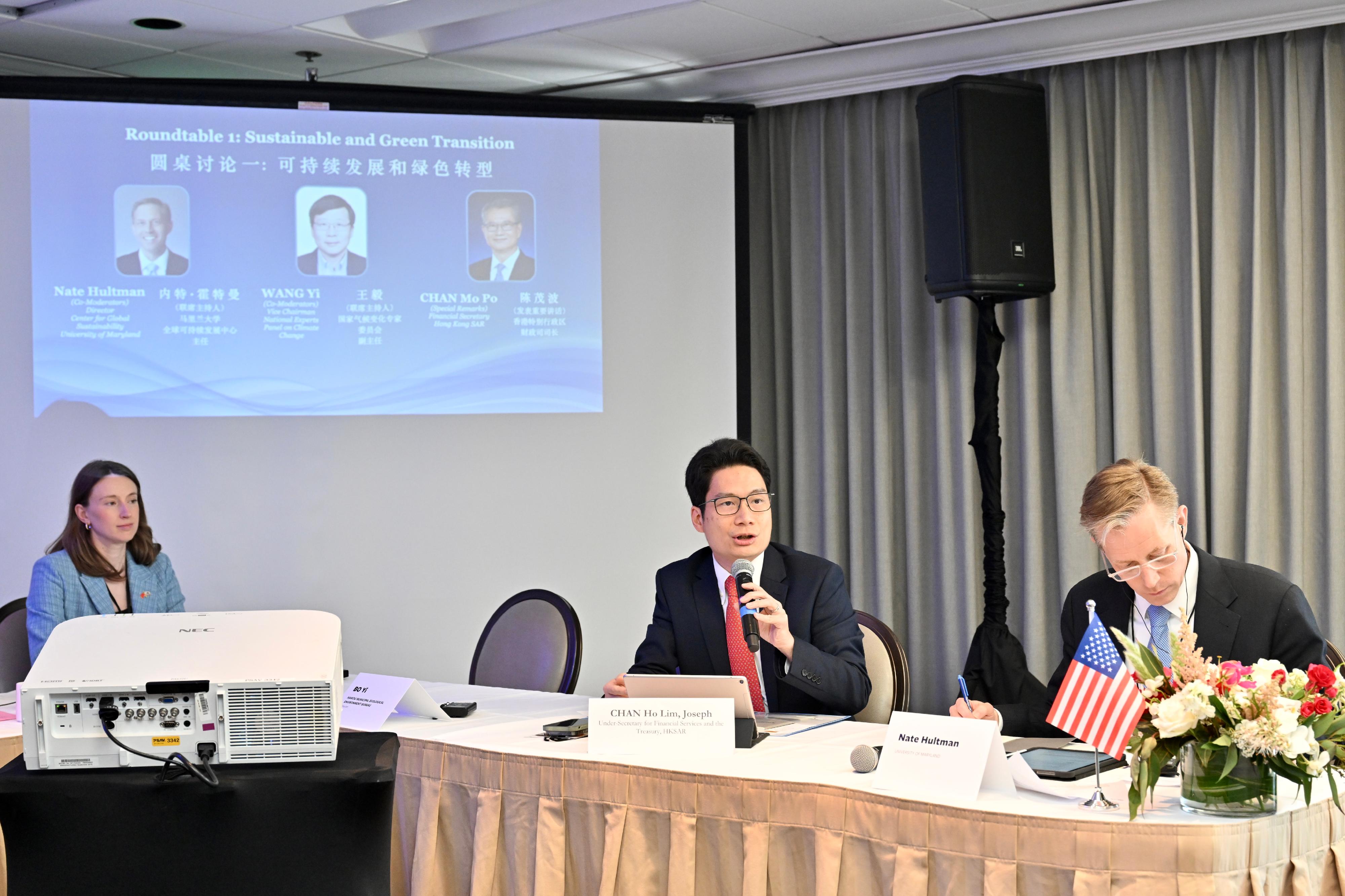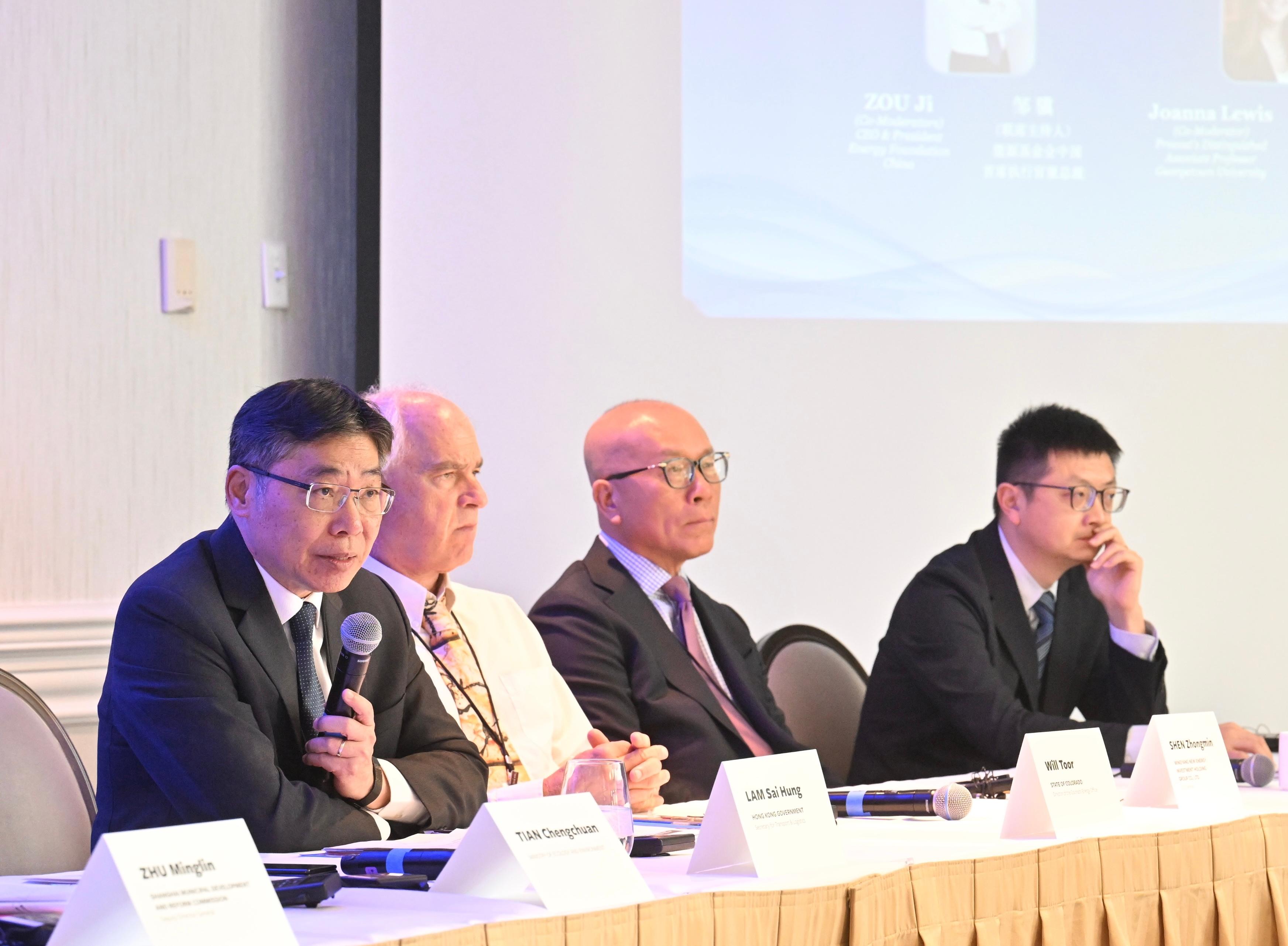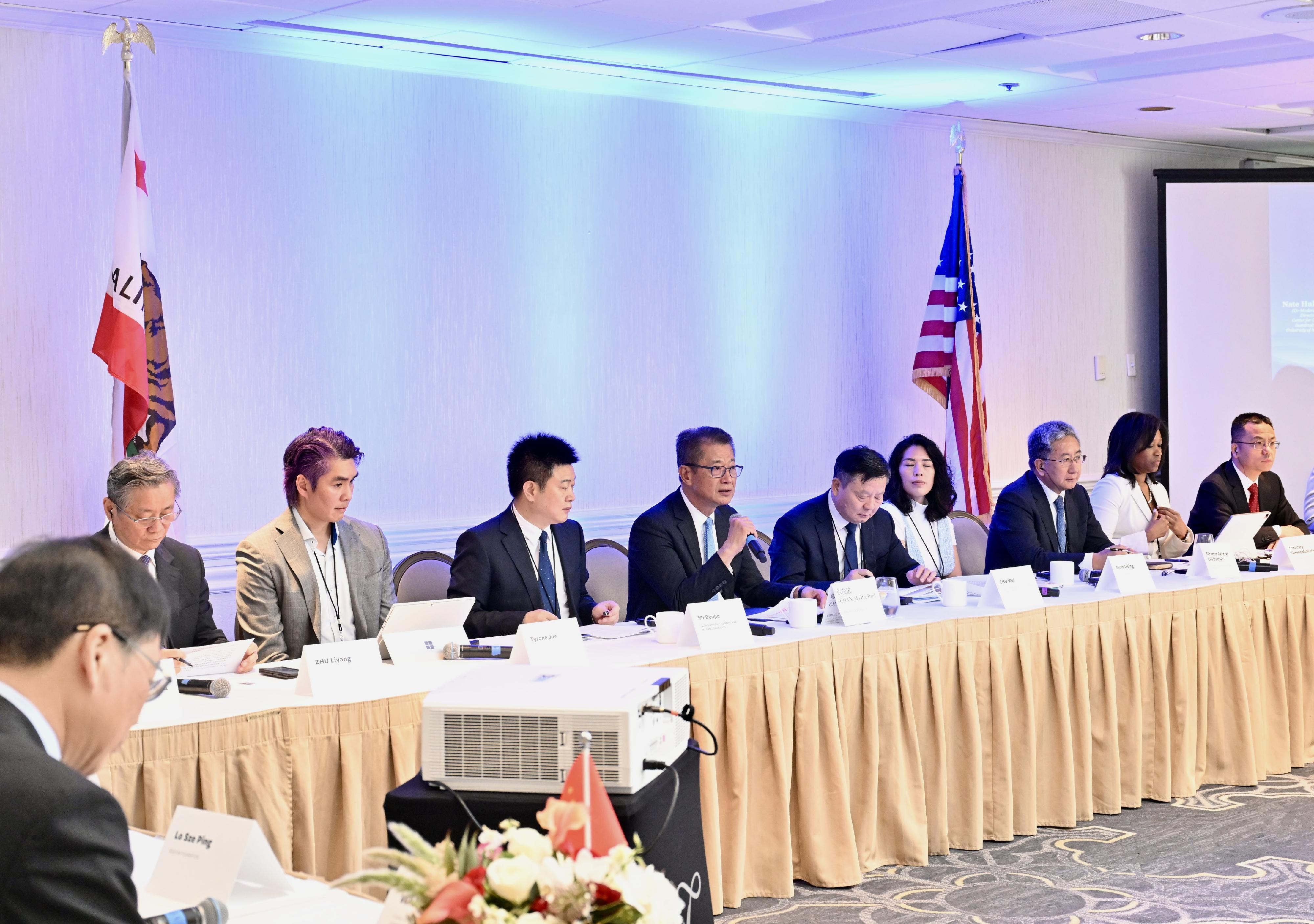Speech by USFST at US-China High-level Event on Subnational Climate Action (English only) (with photo)
Following is the speech by the Under Secretary for Financial Services and the Treasury, Mr Joseph Chan, at the US-China High-level Event on Subnational Climate Action in Berkeley, the United States, on May 29 (California time):
Distinguished panellists, ladies and gentlemen,
Good afternoon. It’s my great pleasure to join you at this US-China High-level Event on Subnational Climate Action.
As mentioned in this morning’s Bay-to-Bay Dialogue between the California Bay Area and the Guangdong-Hong Kong-Macao Greater Bay Area, the urgency of combating climate change has never been greater, hence demand for green and sustainable finance is enormous. A report estimated that the world’s annual climate investments would reach US$9 trillion by 2030, and US$10 trillion by 2050.
Hong Kong is China’s international financial centre, and we lead on various league tables in Asia, including arranging Asian international bond issuance, insurance density, cross-border wealth management, etc. As Asia’s leading international financial centre, Hong Kong is well positioned to channel investment to the green transformation of the economy in China, Asia and beyond, playing our part as a member of the global village to combat climate change for our future generations together.
As our Financial Secretary mentioned earlier, Hong Kong has already become the largest centre for arranging green and sustainable bond issuance in Asia for consecutive years, accounting for 37 per cent of the Asia market last year. The depth of our sustainable finance is not only limited to the sell side. On the buy side, by the end of last year, there were 219 ESG (environmental, social, and governance) funds authorised by the Securities and Futures Commission in Hong Kong, with total assets under management (AUM) of US$170 billion. The number of ESG funds and the total AUM of ESG funds grew by 24 per cent and 20 per cent respectively on a year-on-year basis. In addition to our scale and growth in green finance, Hong Kong has also become a pioneer in developing new green financial products. The first Asian Green Bond Exchanged Traded Funds (ETFs) and Asia’s first Retail Certificate of Green Deposits were also issued in Hong Kong.
The Hong Kong SAR (Special Administrative Region) Government has led by example by issuing close to US$25 billion equivalent in green bonds since 2019 under our Government Green Bond Programme, with different tenors ranging from one year to thirty years, with different currencies including HKD, RMB, EUR and USD, as well as with different types of offerings including institutional, retail and tokenised tranches. These issuances provide benchmark pricing for potential issuers and enrich our sustainable finance ecosystem.
Indeed, last year Hong Kong became the first government in the world that issued tokenised Government Green Bond, and we recognise the importance of combining green finance and fintech to further improve the efficiency of channeling green capital to combat climate change. We launched in March this year the “Prototype Hong Kong Green Fintech Map” to provide one-stop information on the current status of green fintech companies in Hong Kong and related services. In addition, next month we will launch the Green and Sustainable Fintech Proof of Concept Subsidy Scheme, which will provide early-stage funding support for green fintech, facilitating commercialisation and fostering the development of new green fintech initiatives.
Ladies and gentlemen, under “one country, two systems”, with free flow of capital, common law system and our simple and low tax regime, Hong Kong will continue to work closely with our friends in both bay areas to facilitate green investment from around the world to support the green projects, green products and green technologies in the two bay areas, contributing to the effort in combating climate change by our two nations, and by the world. Thank you.




